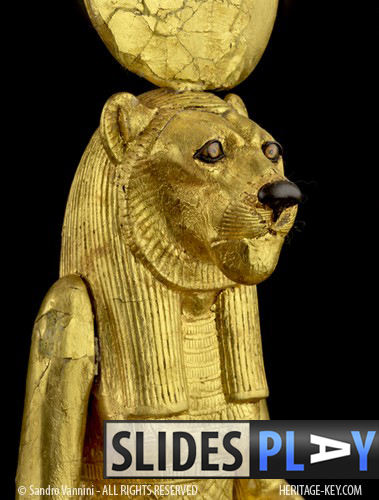Knuckle-dragging, bare-chested, monosyllabic men who once had to rely on violence and brute strength to get by arent as stupid as we think at least judging by the news that ex-cage fighter Alex ‘Mr Katie Price’ Reid is to try his hand at acting, in a new BBC historical costume drama called 200BC. Oh, and cavemen were quite clever too it seems. Reids role is going to be as a prehistoric intellectual in the show, which will be based on growing evidence that Homo sapiens actually lived relatively sophisticated lives, contrary to our idea of them as club-wielding simpletons little…
-
-
It’s not often that stories of looting have a happy ending, but at the weekend a collection of illegally excavated silverware from the third century BC went on display for the first time back in their home-country of Italy. The treasure of Morgantina, as the collection is known, has been returned to Rome by New York’s Metropolitan Museum of Art, where it has been housed since 1982. How the pieces got to the Met is a dramatic and nebulous story of illegal antiquities smuggling and dodgy dealing. American antiquities dealer Robert Hecht sold the pieces to the Met in two…
-
King Tut will be staying in Toronto for two more weeks. The Art Gallery of Ontario announced today that his departure will be delayed until May 2 due to demand for the exhibition. The shows next stop is Denver the start date of which remains unaffected. Visiting hours for the Toronto show have also been extended to accommodate the crowds. To accommodate weekend visitors, the Gallery has extended the exhibitions hours on Friday and Saturday evenings. Visitors will now be able to purchase tickets for entry at 4:30 pm, 5:00 pm, and 5:30 pm. The King Tut galleries will remain…
-
In April 2008 visual artists Khadim Ali and Jayce Salloum travelled from Karachi Pakistan to Kabul Afghanistan, and then into Bamiyan the region famous for its giant Buddha statues that were destroyed by the Taliban in 2001. We spoke to them about their unique experiences of the site. Ali is Hazara, the same background that many of the people who live in Bamiyan are from. His parents were born just to the south of the region. The Taliban treated the Hazara brutally, killing them and burying them in mass graves. Today the Taliban wage an insurgency in the south and…
-
Sad news today for Italy: part of the complex archaeological structure surrounding Nero’s ‘Golden House’ in Rome his extravagant palace between 64-68 AD has collapsed following heavy rain. The Domus Aurea, as it is known, is one of the treasures of the ancient Roman world. Although it has been mainly closed to the public in recent years due to efforts to fend off encroaching damp and decay, it is a unique archaeological site and an important part of Italy’s heritage. The site is structurally complex and includes important buildings from the reigns of Nero and Trajan. When Nero committed suicide…
-
Housed inside Cairo’s Egyptian Museum are many of the artefacts from King Tutankhamun’s tomb (KV62) including the Ritual Figure of Sekhmet, which was discovered in 1922 by the great explorer Howard Carter and his financier Lord Carnarvon. The two men who had a trusting and close bond, as well as a love for Egyptology as explained by his modern day ancestors in a Heritage Key interview (Watch the video about Carter and Carnarvon). Included in the discovery were 34 ritual figures, believed to be of significant importance in the burial ceremony. Egyptology photographer Sandro Vannini has been capturing many of…
-
In three weeks the King Tut exhibit Tutankhamun: The Golden King and the Great Pharaohs will be leaving Toronto, heading off to the mountains of Denver. The exhibition has been a huge success, and has prompted a new wave of Egyptomania unseen since King Tut’s 1979 visit to the city. It wouldnt be appropriate for the king to leave without a send-off, and the Art Gallery of Ontario has an interesting one. This Wednesday the gallery will play host to the premiere of Osiris and Isis the Opera. Composed by Colin Mack and directed by Guillermo Silva-Marin, this show will…
-
Channel 4’s digital channel More4 has kicked off a juicy seven-week series of documentaries fronted by historian Bettany Hughes. The Ancient World began on Wednesday 24 March with a new film about Alexandria, the city founded by Alexander the Great in 332BC. Hughes travelled to Egypt in search of the city’s ancient origins, delved beneath the streets and explored the sunken ruins that are all that remain of what was once the largest city in the world. Alexandria is one of the world’s greatest ancient cities. It’s a hugely fascinating place and a topic ripe for exploration. For centuries it…
-
The Riace Bronzes, a pair of fifth-century BC statues of bearded warriors from the ancient Greek world, are undergoing restoration that experts hope will help them to answer some of the questions that have puzzled them ever since the statues were found off the coast of Calabria almost 40 years ago. To this day, archaeologists and historians are not sure of the identity of the two warriors. Some theories have speculated that they could represent two characters, Tydeus and Amphiaraus, from the ancient Greek play, Seven Against Thebes. A monument representing the play is known to have existed in Argos.…
-
You live long enough in this city and you’ll see things you couldn’t even imagine – like a 25-foot tall Anubis statue being towed around New York harbour, which is what happened yesterday morning. Anubis’s arrival heralds the one-month countdown for the exhibition, Tutankhamun and the Golden Age of the Pharaohs, which opens April 23 at the Discovery Times Square Exposition in Manhattan, on the final leg of its journey round North America. Tickets for the show went on sale the same day. The exhibition has already wowed Tutaholics in San Francisco, and exhibitors hope that Tut will cause the…




